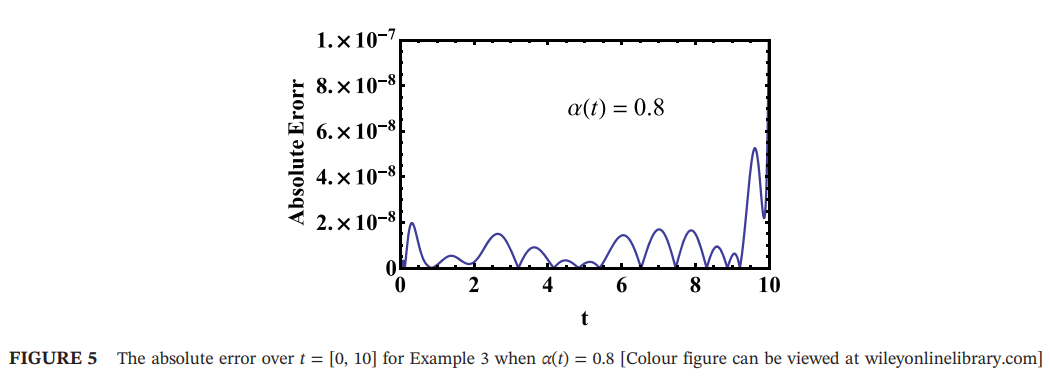
The minimax approach for a class of variable order fractional differential equation
This paper introduces an approximate solution for Liouville-Caputo variable order fractional differential equations with order 0
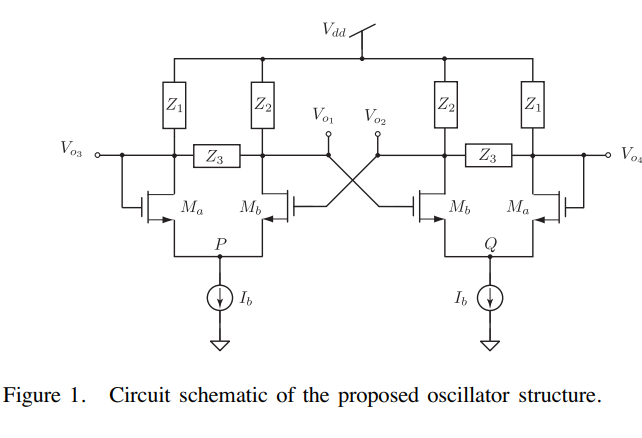
On a class of quadrature phase oscillators using differential pairs
A new class of quadrature phase oscillators based on cross-coupled differential pairs is introduced. This class contains eight possible circuits which produce four output voltages with phase differences of ±π or ±π/2, depending on the choice of output node, and does not require balanced differential-pair loads. Phase error analysis is provided along with experimental and simulation results using discrete MOS and BJT transistors as a proof of concept. © 2018 IEEE
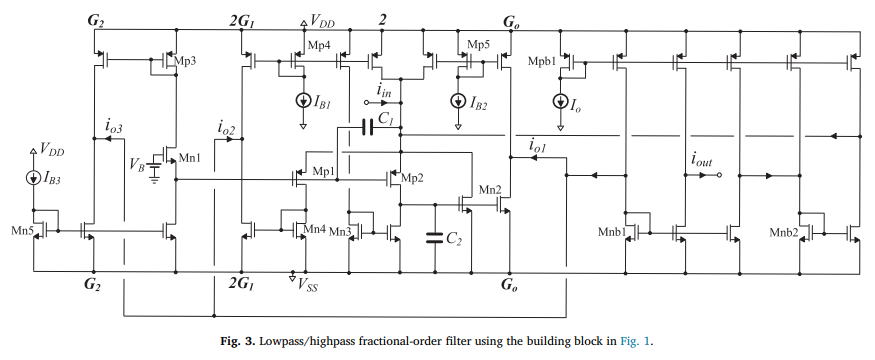
Design and application examples of CMOS fractional-order differentiators and integrators
Reduced complexity CMOS fractional-order differentiator and integrator building blocks are introduced in this work, based on 2 nd -order integer-order transfer function approximations. These blocks are then used for implementing fractional-order filters as well as a Leaky-Integrate-and-Fire Mihalas-Niebur neuron model. Cascading 1 st and 2 nd -order blocks to obtain 5 th -order integer-order transfer functions, improved bandwidth of approximation accuracy is achieved. Furthermore, the realization of fractional-order capacitor and inductor emulators is demonstrated. © 2018 Elsevier Ltd

Security and Efficiency of Feistel Networks Versus Discrete Chaos for Lightweight Speech Encryption
This paper compares examples of non-chaotic and chaotic ciphers from the viewpoint of their suitability for speech encryption, especially in real-time and lightweight cipher systems. The non-chaotic encryption scheme depends on a modified Generalized Feistel Network (GFN), Linear Feedback Shift Register (LFSR) and Substitution Boxes (S-Boxes). The chaotic encryption scheme utilizes a generalized modified tent map with multiple modes of operation. The security and efficiency of both schemes are analyzed using the perceptual tests: time waveform and spectrogram; the statistical tests: histogram

Active control of the dynamic density of acoustic metamaterials
All attempts to develop acoustic metamaterials with prescribed characteristics are based on utilizing the concepts of resonance frequencies of the metamaterial cell structure or on the spatial arrangement of two-or multi-phase domains to realize density or bulk modulus values on the micro scale that influence the wave propagation on the macro scale. In here, a radically different concept is presented whereby active acoustic metamaterial cell has been developed to manipulate the incompressible material dynamic density and reach relative stable values of 0.35–13 times the original fluid domain

Pinched hysteresis with inverse-memristor frequency characteristics in some nonlinear circuit elements
Abstract Pinched hysteresis is considered to be a signature of the existence of memristance. However, here we report on a model that exhibits pinched hysteresis yet it may represent a nonlinear inductor or a nonlinear capacitor (both with quadratic nonlinearity) or a derivative-controlled nonlinear resistor/transconductor. Further, the lobe area of the pinched hysteresis loop in these devices has inverse-memristor characteristics; i.e. it is observed to widen rather than decline with increased operating frequency. Experimental results are provided to validate the model. © 2015 Elsevier Ltd.
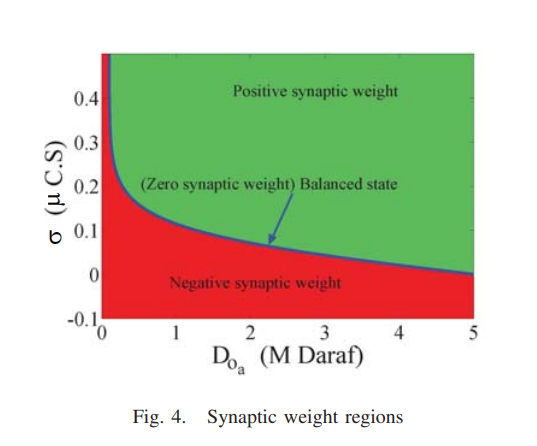
On the mathematical modeling of memcapacitor bridge synapses
Mem-element based synaptic bridge is very promising topic due to its learning capability where the synaptic bridge can be build using either memristors or memcapacitors. In this paper, the detailed mathematical analysis of memcapacitor bridge circuit is introduced. This mathematical analysis is build when a current input signal is applied to excite the bridge. Closed form expressions for the required pulse width; synaptic weight; and conditions for positive, negative and zero synaptic weight are derived. The obtained expressions are verified using SPICE simulations showing very good matching.
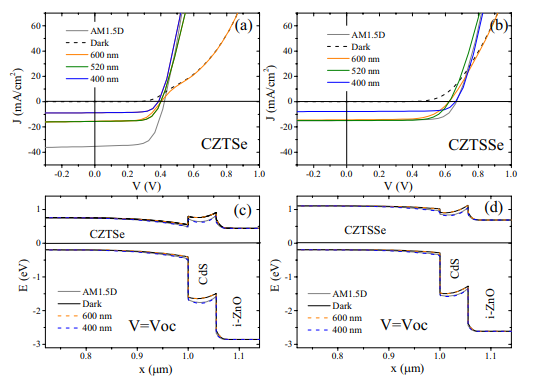
Spectral current-voltage analysis of kesterite solar cells
Current-voltage analysis using different optical band pass filters has been performed on Cu2ZnSnSe4 and Cu2ZnSn(S,Se) 4 thin-film solar cells. When using red or orange light (i.e. wavelengths above 600 nm), a distortion appears in the I-V curve of the Cu 2ZnSnSe4 solar cell, indicating an additional potential barrier to the current flow in the device for these conditions of illumination. This barrier is reduced when using a Cu2ZnSn(S,Se)4 absorber. Numerical simulations demonstrate that the barrier visible under red light could be explained by a positive conduction band offset at the front
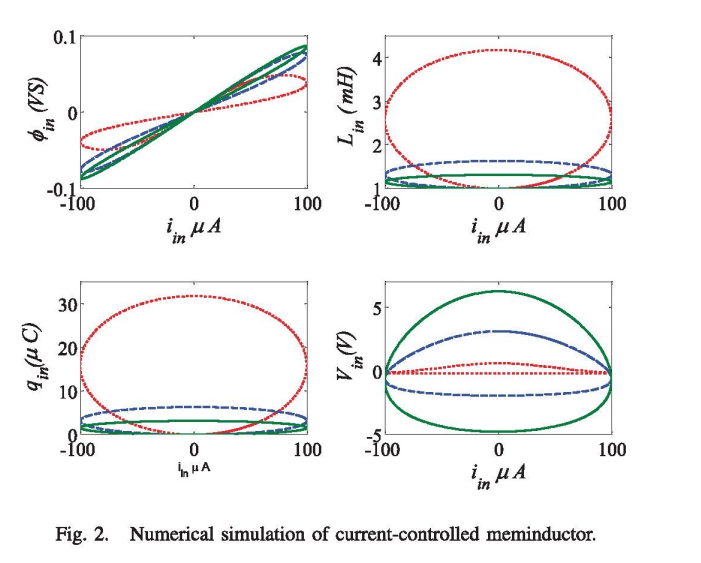
Memristor-less current- and voltage-controlled meminductor emulators
This paper introduces two mathematical models of meminductor based on a simple symmetrical double-loop equation with their generic formulas and analysis. Moreover, new circuits based on CCII are developed for emulating the behavior of the current-controlled and voltage-controlled models. The proposed circuits are realized without using a memristor unlike the previous emulators. Finally, the proposed emulators are verified using PSPICE simulations. © 2014 IEEE.
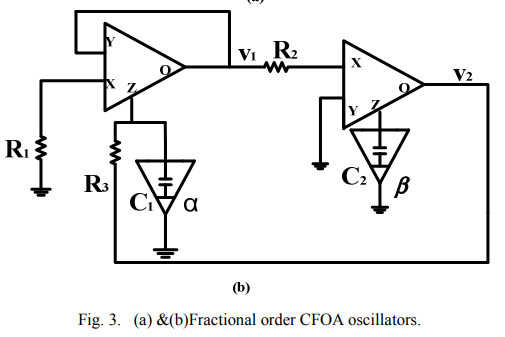
Current feedback operational amplifier (CFOA) based fractional order oscillators
This paper presents a study of fractional order oscillators based on current feedback operational amplifiers (CFOA). Two general cases have been discussed for the oscillation frequency and condition with the use of two fractional order elements of different orders. Design procedure for the two general cases is illustrated with numerical discussions. Circuit simulations for some special cases are presented to validate the theoretical findings. The simulations have been done using Ad844 commercial CFOA model © 2014 IEEE.
Pagination
- Previous page ‹‹
- Page 27
- Next page ››
